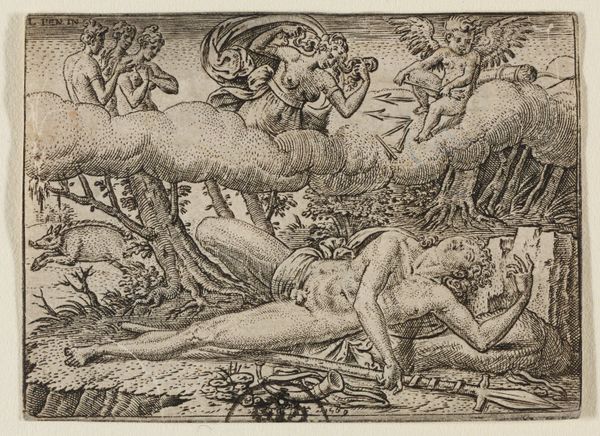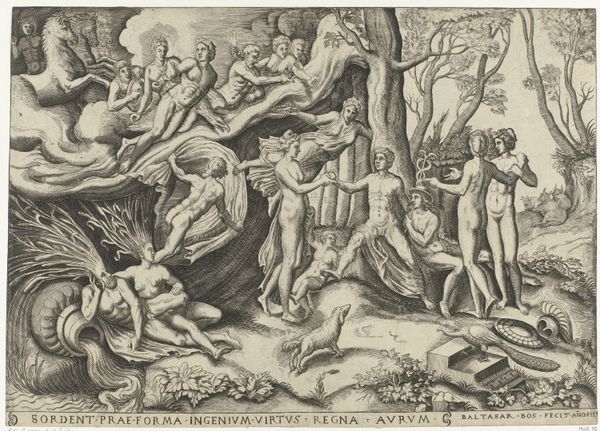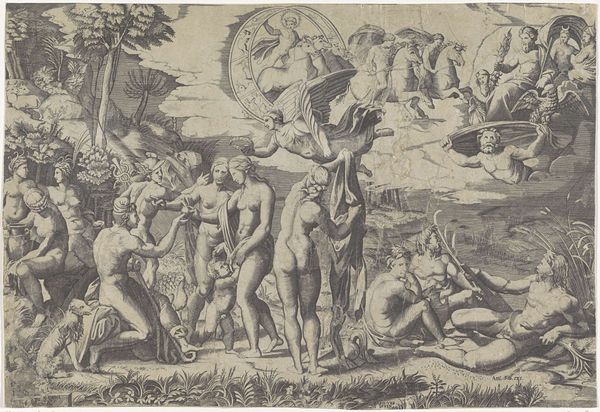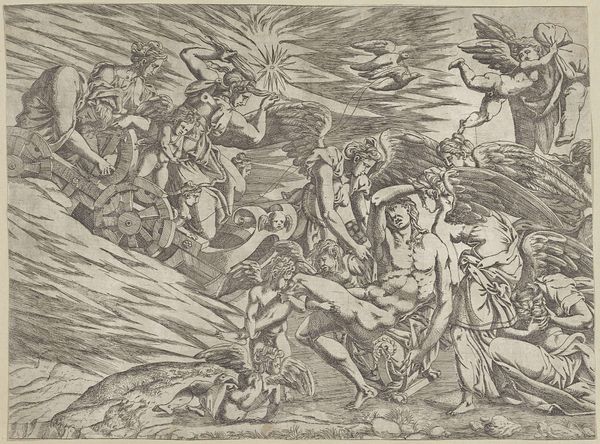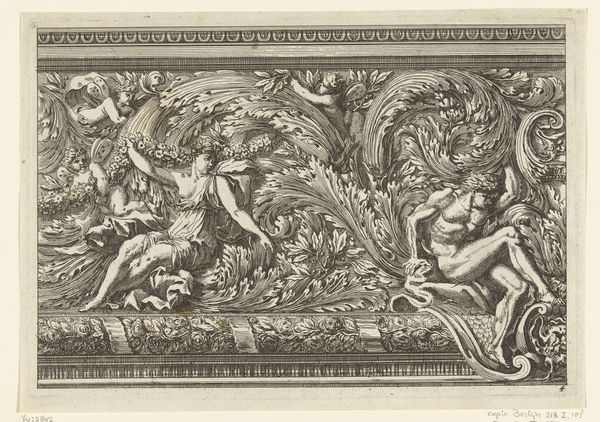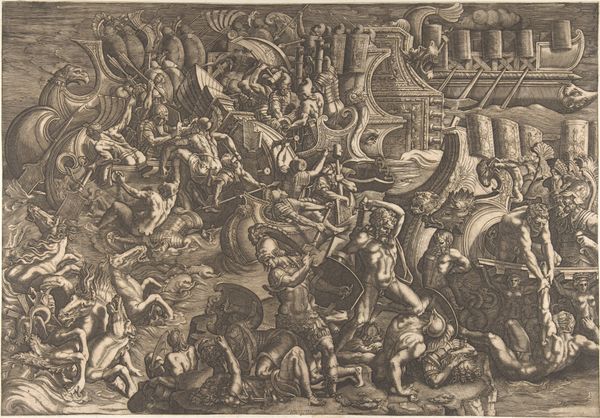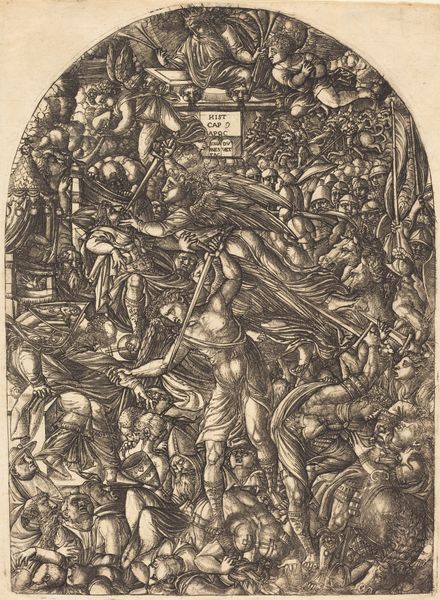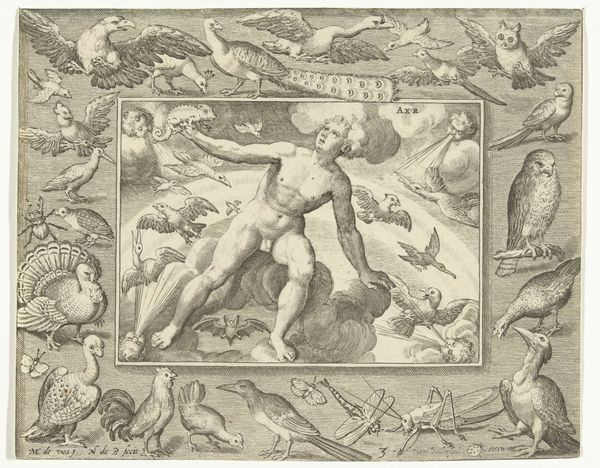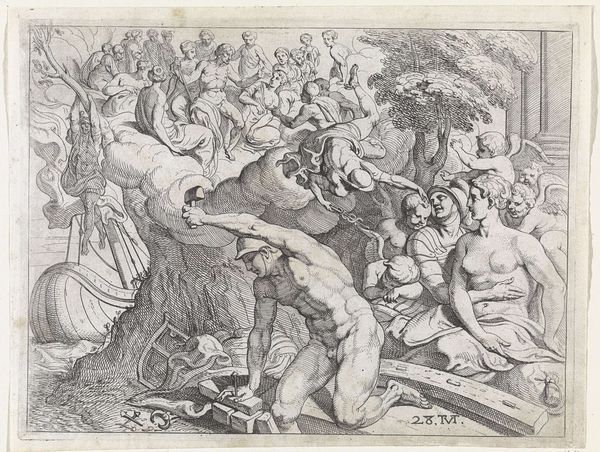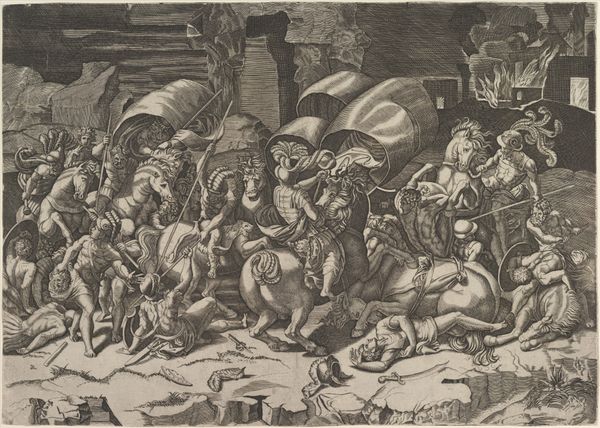
print, engraving
#
allegory
# print
#
mannerism
#
figuration
#
history-painting
#
engraving
Dimensions: height 340 mm, width 569 mm
Copyright: Rijks Museum: Open Domain
Editor: Here we have Giulio Bonasone's "Strijd van goden en giganten," created sometime between 1501 and 1580. It's an engraving, so a print, showcasing this chaotic scene of gods battling giants. I’m immediately struck by the stark contrast between the serene, almost detached expressions of the gods above and the agony of the giants below. How do you interpret this visual dichotomy? Curator: That contrast is precisely where the power lies. The gods, positioned above, represent established power structures, detached from the suffering they inflict. The giants, in their chaotic struggle, embody the oppressed, those who dare to challenge the status quo, even if their rebellion is ultimately futile. Consider the historical context: Mannerism, with its exaggerated forms and theatrical compositions, emerged during a period of religious and political upheaval. Doesn't the print become an allegory for societal power struggles? Editor: It does! Seeing it as a representation of societal struggles makes the gods' composure feel even more… callous, somehow. Is the print itself perhaps taking a position, siding with the struggles of the giants, by giving them so much visual weight and dynamism? Curator: I think it’s important to resist simplistic readings of "good" versus "evil". Rather, it invites us to question the nature of power itself. Who gets to write the narrative? Are the gods inherently just, or are they simply those who have managed to consolidate power? We need to examine whose perspectives and experiences are historically privileged. Could it be reflecting, perhaps subconsciously, a burgeoning awareness of class struggles or even early anti-colonial sentiments? Editor: So, it's not necessarily a straightforward endorsement of the giants' cause, but an interrogation of the power dynamics at play. Curator: Precisely. It makes us confront the uncomfortable realities of domination, resistance, and the often-blurred lines between them. Editor: This has given me a lot to think about. It's more than just a mythological battle; it’s a mirror reflecting our own social realities. Curator: Indeed. And that's what makes it such a powerful piece, even centuries later.
Comments
No comments
Be the first to comment and join the conversation on the ultimate creative platform.

